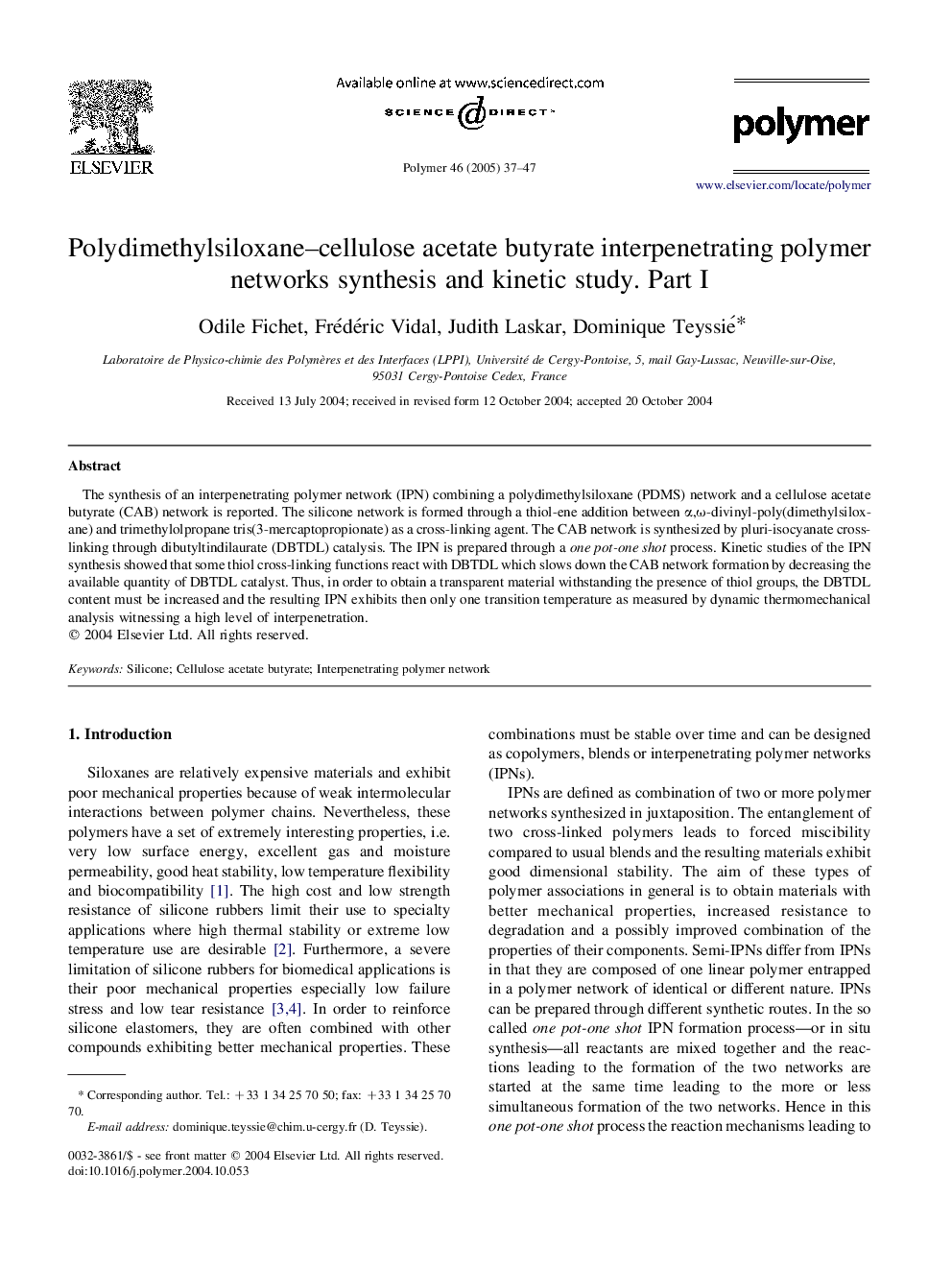| Article ID | Journal | Published Year | Pages | File Type |
|---|---|---|---|---|
| 9559754 | Polymer | 2005 | 11 Pages |
Abstract
The synthesis of an interpenetrating polymer network (IPN) combining a polydimethylsiloxane (PDMS) network and a cellulose acetate butyrate (CAB) network is reported. The silicone network is formed through a thiol-ene addition between α,Ï-divinyl-poly(dimethylsiloxane) and trimethylolpropane tris(3-mercaptopropionate) as a cross-linking agent. The CAB network is synthesized by pluri-isocyanate cross-linking through dibutyltindilaurate (DBTDL) catalysis. The IPN is prepared through a one pot-one shot process. Kinetic studies of the IPN synthesis showed that some thiol cross-linking functions react with DBTDL which slows down the CAB network formation by decreasing the available quantity of DBTDL catalyst. Thus, in order to obtain a transparent material withstanding the presence of thiol groups, the DBTDL content must be increased and the resulting IPN exhibits then only one transition temperature as measured by dynamic thermomechanical analysis witnessing a high level of interpenetration.
Related Topics
Physical Sciences and Engineering
Chemistry
Organic Chemistry
Authors
Odile Fichet, Frédéric Vidal, Judith Laskar, Dominique Teyssie,
